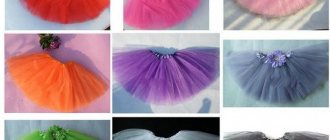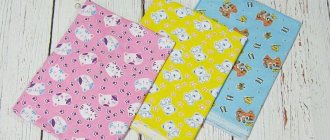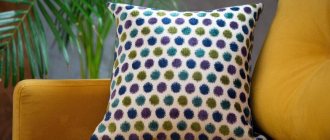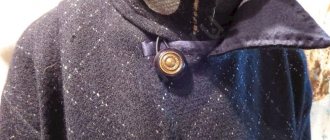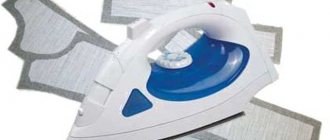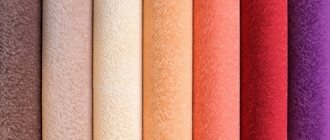Today I want to talk about canvas, how to stretch it on a stretcher, its composition and the nuances of care.
In today's artist supply market, there is quite a wide selection of canvases to choose from. For those who prefer to stretch themselves and control the entire process from creating the base to coating the painting with varnish - primed or unprimed canvases in rolls, stretched on a stretcher with or without primer, for those who prefer only to paint. There are two main ways to stretch canvas onto a stretcher
What fabric are oil canvases made from?
All canvases for drawing can be classified according to several criteria: by type of base, by the material from which they are made, by texture and size.
First of all, let's figure out what types of canvases there are by type of fabric.
Cotton canvases
Smooth, smooth and silky, cotton canvases are perfect for beginning artists. You can practice on them and try your hand at painting without fear of ruining an expensive canvas. After all, the price of cotton canvases for painting is much lower than linen ones, for example
Another undoubted advantage is that cotton is very affordable; you can buy such canvases in any store.
The disadvantages include the fact that, unlike linen canvas, cotton canvas can sag over time. Again, it all depends on the tension, but compared to linen, cotton is certainly inferior.
Cotton canvases also have one peculiarity: they began to write on them not so long ago. And if artists have been using linen canvases for more than one century, then cotton canvases have been used for only half a century. Therefore, we do not know how such a canvas will behave in the future, whether it will retain all its properties - whether it will sag, crack, and so on.
Linen canvases
Linen canvas is a fairly durable and resistant material to many external irritants, for example, temperature changes, humidity, dryness and others.
The peculiarity of linen canvas for oil is that the linen fabric itself is quite grainy. And this gives the entire canvas an unusual appearance and texture.
The most obvious advantage of linen canvas for painting is its durability. Remember, cotton canvases began to be used quite recently, but linen canvases have been used for centuries! And, as we can see for ourselves, such a canvas perfectly retains all its properties without losing quality, even after centuries.
Another unobvious advantage of linen canvas is that it does not absorb moisture, for example, like cotton canvas. Therefore, it will not swell or sag under the weight of paint or water if, for example, you paint with acrylic paints.
It is also worth noting that linen canvas for oil comes in different grain sizes, therefore, you can choose a canvas for different types of painting, so that it is on this canvas that your painting looks most advantageous.
Synthetic canvases
Such canvases are usually made from polyester. They themselves are very durable and are also not susceptible to moisture and external irritants. It is also worth considering that synthetic fiber will absorb paint differently, which may cause it to spread.
In general, such a canvas is also suitable for oil, and you can safely learn to paint on it, trying different techniques and paint.
Complex polyester
Synthetic fabric, developed in the 20th century, is superior to both linen and cotton canvas in many ways. Complex polyester is a strong and very resistant material. It is more dimensionally stable than linen and less sensitive to the acidic effects of oil paints. It is not subject to rotting and has no tendency to expand or contract depending on the humidity of the environment in which it is located. On a complex polyester base, the same primers and adhesive solutions used with linen or cotton fabrics can be used. One of the main characteristics of complex polyester is the complete absence of texture. This is a completely smooth material. Proponents of compound polyester - such as Australian paint manufacturer Archival - strongly recommend compound polyester as a painting base. The firm is not alone in its belief; but, nevertheless, complex polyester is not yet particularly popular. And it has not yet fully entered the art materials markets.
Canvas sizing
Another very important and mandatory stage of working with canvas before priming is sizing the canvas.
This can be done with edible gelatin dissolved in water. The consistency of this mixture should be similar to liquid jelly.
Basic properties of sizing
The first reason sizing is necessary is to isolate the canvas (cardboard, paper, board) from the oil paint. On an unglued base, the oil from the paint penetrates into the cellulose, and the free fatty acids contained in the oil partially destroy it. As a result, cellulose becomes brittle and easily breaks under mechanical stress.
Sizing is also necessary if the fabric has a rare weave. The adhesive film additionally covers the holes between the threads. This is achieved by applying several sizing in 2-4 layers.
The main task for an artist when gluing canvas is not to wet it through, but to apply a protective film to the front side of the canvas. Therefore, it is necessary to use a sizing solution that resembles the consistency of jellied meat. With such a viscosity, it will be slightly absorbed into the threads, but this will be enough for strong adhesion to them.
And the primer fits better on the glued canvas, thanks to which the consumption of primer is reduced to the optimal amount.
MASONITE board (hardboard)
This is a synthetic material made from a mixture of wood fibers crushed into sawdust and glue. The mixture is formed, resulting in a flat sheet. Masonite comes in a range of dark brown to coffee tan colors and comes in both specially treated (hardened) and untreated surfaces. The treated side has significant hardness and may need to be sanded with sandpaper before priming. The untreated surface contains more fibers and is characterized by lower hardness; therefore, of the two types, it is this surface that is most suitable for painting, due to its ability to absorb. Some types of hardboard have a very smooth, flat surface on one side and a rough canvas-like texture on the back. But the side with a rougher texture will not be able to give the viewer the impression that there is fabric in front of him. Generally, it is better to use the smooth side. There are also hardboard sheets in which both sides are smooth. Of course, this base lacks the attractive texture inherent in wood - wood grain; but in any case this property will be lost after priming a board even made of natural wood. Is the natural beauty of wood really that important if it is ultimately hidden under a layer of primer? Masonite (hardboard) also has its disadvantages. The first problem when working with them is that the board bends very easily, but not in accordance with the direction of the fibers, but obeying the force of gravity. This means that a piece of hardboard suspended at an angle to the wall will begin to bend towards the center of gravity. To prevent this effect, the sheet should be inserted tightly and completely straight into the frame, or placed flat in a lying position, or reinforced at the back with wooden connecting brackets. A warped wooden frame is very difficult to straighten, so use good quality, well-seasoned wood to strengthen the back of the board. Another problem associated with the use of hardboard is the significant weight of large sheets. If you really want to work in a large format, use multi-layer plywood instead of hardboard, as the latter is somewhat lighter. Hardboard sheets are inexpensive and are sold almost everywhere. In addition, they are very strong and durable - their shelf life is comparable to that of hardwood; It is certainly very durable and one of the best artistic quality rigid bases available.
Why prime a painting?
First of all, you must understand that primer is not the paint with which we paint a picture, but the base that we put on the canvas before we start painting.
So, why prime your canvas? Surely you have painted walls or hung wallpaper at least once. So, before doing this, you most likely leveled the walls, cleaned them with sandpaper, and covered them with putty. You did all this in order to level the surface of the wall and apply an even layer of paint, or paste wallpaper without roughness or bubbles.
So, with canvas primer it’s about the same. Primer is our putty, which should be applied to make the surface of the canvas smoother and more textured. The primer will also serve as a good binder for the paint and the canvas itself.
Another important point why you should cover the painting with primer is so that the canvas fabric does not absorb a lot of paint. This will save on its consumption, and, accordingly, your money on materials.
There are now both regular and primed canvases on sale. I always advise beginning artists to buy an already primed canvas to save themselves from unnecessary costs. But, if you have been painting for a long time, you can try to prime the host yourself, of course, following all the instructions on the can of primer.
Oil canvas can be coated with a special oil primer consisting of white and an oil thickener. But such a primer will take a very long time to dry, so I would recommend using acrylic primer.
It dries much faster, is more available in stores and is suitable not only for painting with acrylics, but also with oil paints. With such a primer, the surface of your canvas will be smooth, matte and elastic, which will help you in further work when painting.
Features of choosing and working with material
Canvas is a specific material that can emphasize the value of the work, or completely devalue it. To prevent your impressions from becoming an unpleasant surprise, it is recommended to take into account several selection criteria:
- visual assessment. Inspect the primed surface for smudges, stains, cracks, and bubbles. A minor defect can ruin the work;
- Place flat on a flat surface. High-quality canvas is quite heavy, so the distance between the corner of the fabric and the base should not exceed 5 mm;
- If the canvas is stretched over a stretcher, apply light pressure with your finger. The form will be restored in less than a minute. If the “dent” remains, the canvas is not suitable for use;
- consider the subframe. The modular design should not have external defects - cracks, burrs, scratches, chips. Side not less than 3 mm;
- water test. A well-applied primer does not allow liquid to pass through.
Note! Avoid underpricing canvas too much. There is a high probability of getting a fake.
Canvases by type of base
Just like their structure, canvases are also divided according to the type of base. Oil canvases come on cardboard, a stretcher, or simply in a roll; there is also special paper for oil paints.
Let's look at each of these types in more detail.
Canvas on cardboard
This is a canvas that is glued to cardboard. It is often used for sketching by those who are just learning to paint and want to hone their drawing skills. This kind of canvas is lighter and cheaper, it’s easier to choose a frame for it, and it’s also convenient to take with you to the plein air. Just don't confuse it with primed cardboard. After all, unlike the first one, there is already a canvas here.
Canvas on stretcher
Timeless classic. The canvas is stretched on a wooden frame, and if desired, it can be removed, re-stretched or the stretcher changed. But you will have to order a frame for such a canvas at a framing workshop.
Canvas in roll
This is primed and glued fabric, rolled into a roll. Before starting work, such a canvas must either be glued to cardboard or stretched onto a stretcher. If you want to try to create the basis for the picture yourself, you can take it.
Butter paper
I advise you to buy a couple of sheets from Russian manufacturers - the paper is cheap and suitable for sketches. It is primed, just like canvas.
History of material in art
Fabric is closely related to creativity. Canvases are used primarily in painting. Canvas material is the optimal basis for painting. Thanks to the strength of the interweaving of the fibers, the painting is preserved in its original form for decades (paper media fade and tear). They are rolled up, so they are easy to transport. It is enough to remove the painting from the stretcher for transportation in a tube. The quality will be maintained even after accidental wetness. The colors will not spread, the brightness will remain.
The first mention of the use of canvases in painting dates back to the 16th century. Wooden substrates have been replaced by flexible and, at the same time, durable material. In Ancient Rus' it was used by icon painters.
Canvas grain
You need to choose a canvas based on its grain size based on what will be written on the painting. What technique will be used, how much or how little paint you will apply, what your strokes will be like.
Considering all the features when choosing a canvas, especially if you know that your creative vision may change, is quite difficult. But there are several main types of grain that you should consider when choosing a canvas for your future painting.
Fine grain canvas
If you paint in a smooth technique and apply paint in thin layers, a fine-grain canvas will work well for you. Also, on such a canvas it is very convenient to paint miniature paintings, recording the smallest details.
Coarse canvas
As you might have guessed, this type of canvas is the opposite of a fine grain canvas. If you are painting a voluminous work, apply a lot of paint with broad strokes - large grain on the canvas is what you need.
Such a canvas will not sag under the weight of all the paints that you will use, but will only emphasize all the charm and peculiarity of the technique in which you paint the picture, for example, impasto.
Scenic canvas
Special canvas for oil paints, made from 100% linen. Like coarse-grained canvas, such a canvas does not stretch or sag even under several layers of paint.
About oil and acrylic paints
It is impossible to name an ideal and universal canvas for oil painting, since each artist has his own preferences, style of painting, tastes and capabilities. The only thing we can say for sure is that linen and cotton suit oil painting quite well.
The same can be said about acrylic paints. This is why they are good because they can be used on any surface: wood, metal, glass, canvas, plaster, stone, etc. For example, you can use the impasto painting technique on canvas, both with acrylic and oil. But it should be remembered that it is much more difficult to paint first, because acrylic dries quickly, and some artists find it difficult to create smooth transitions. However, we will talk about the technique of acrylic painting in other articles.
Canvas size
It all depends on your imagination and what you will draw.
I advise beginning artists to choose a medium-sized canvas (30x40 or 40x50) for the first time. A painting of this size will fit into almost any interior; you will feel the scale of the work, but will not get tired of drawing details on a large canvas.
Over time, when you get better at it and master some oil painting techniques, it will be easier and simpler for you to take on something large-scale, paint a picture on a large canvas. After all, such work requires not only a lot of expenses in materials, but also a lot of time and patience, so it’s still better for a beginner to take a smaller canvas.
Small size canvases start from 10x10 cm, medium size from 30x40 cm and 50x70 cm, and large size canvases from 60x90 cm.
Of course, if you wish, you can find canvases in both larger and smaller formats. And, if you are painting a picture for yourself, then you should think in advance where you will put it later and whether it will stand out from the interior.
What to draw?
Beginning artists are often troubled by the question – what to draw?
You need to draw everything!
If you don’t try portraits, landscapes, still lifes, abstractions - how will you determine what exactly is yours?
?
The process of finding oneself in creativity is a complex and long period during which the artist tries and tries
different styles, different genres, different subjects.
He goes through them and selects what turns out better, what he likes more, what his soul is inclined to
.
During this period, the artist finds his true self, drawing his cat or new buildings visible from the studio window, or a ship in the harbor. Some works will remain in the studio forever, some will decorate the walls of friends and relatives, and some will become world masterpieces! And for this to happen, don’t stop experimenting.
, study modern society, but never forget what interests you.


